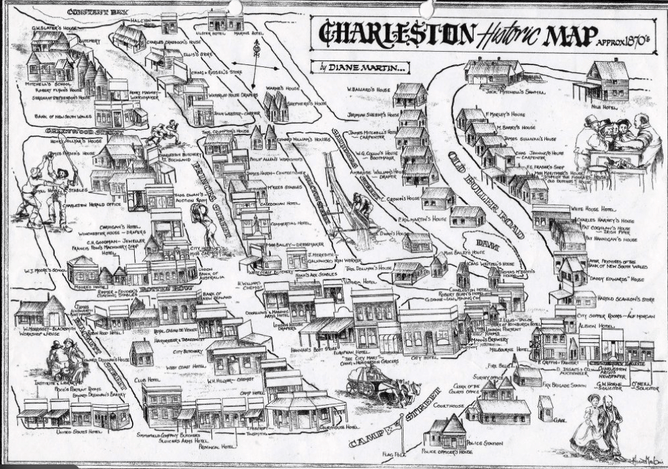Tōtara River to Charleston – From Forest Quiet to Gold Town Charm
The morning air beside the Tōtara River always feels cool and fresh, the kind of air that fills your lungs and clears your mind. We love to start this section of the Kawatiri Coastal Trail early, when the light filters through the trees and the mist still drifts above the water. The river runs gently here, weaving its way through stands of tōtara and rimu before curving toward the sea. It is a peaceful beginning, one that invites you to slow down and notice the little details around you.
As we follow the trail away from the river, the sound of running water fades and the forest takes over. The track is soft under our tyres and the air carries the scent of damp earth and fern. It feels ancient, as if the trees have been watching travellers pass for centuries. This part of the trail always makes us think about how the early settlers must have moved through this same landscape, on foot or horseback, following the rivers and ridgelines long before roads were built.
Gradually the forest begins to thin, and shafts of sunlight appear through the canopy. Birdsong echoes across the valley. Sometimes we see a kererū swoop heavily through the trees, its wings beating with a sound like silk. At other times a tiny fantail follows us along the path, darting and chattering as if keeping us company. The West Coast forest has a way of feeling alive, and we always leave this section with a sense of having shared the space with something much larger than ourselves.
The trail eventually leads us to the Rāhui section, where the land opens out again and the first hints of gold-mining history begin to appear. Old stone walls and traces of tailings hint at the human stories hidden beneath the ferns. Here the Kawatiri Trail connects with the region’s past. It is humbling to imagine the thousands of miners who once worked in this area, carving a life out of the wilderness in search of gold. The air feels heavier with history, and we often stop to talk about how different the coast must have looked in those days.
Soon the forest gives way to open river flats, and ahead lies one of our favourite features on the entire trail — the Nile River suspension bridge. It is a beautiful structure, elegant and simple, stretching across the water like a ribbon. Standing in the middle of the bridge, we can see the river curling through deep green bush below. The reflections of the trees shimmer on the surface, and every sound seems magnified, from the call of a tui to the rustle of leaves in the breeze. We always pause here for a long time. It is impossible not to.
Beyond the bridge, the final section of the trail leads us toward Charleston. The forest slowly gives way to open farmland, and the sound of the sea returns. The air smells faintly of salt and sunshine, and before long we catch our first glimpse of the coastline once more. This short stretch always feels like a celebration. The trail smooths out, the town comes into view, and we feel that satisfying sense of completion that comes after a day well spent.
Charleston itself is small and full of character. It once buzzed with thousands of miners during the gold rush, but today it is quiet and welcoming, surrounded by forest and the sound of the ocean. We often finish our ride here with coffee or lunch, sitting outside in the sun and chatting with locals who are proud of their town’s history. Just beyond the village lies the entrance to the Nile River caves, where modern visitors explore the same limestone passages that miners once used as shelter. It is a wonderful place to end the journey, full of both natural beauty and human stories.
Every time we complete this section, we feel that the trail has told us a new story. From the wild sea cliffs at Cape Foulwind to the soft light of the forest and the echoes of gold in Charleston, each part holds its own kind of magic. Riding or walking it reminds us how lucky we are to live in a place where nature and history sit so closely together. By the time we return home, our legs are pleasantly tired, our hearts full, and the coast feels more alive than ever.


